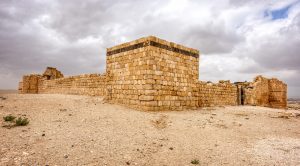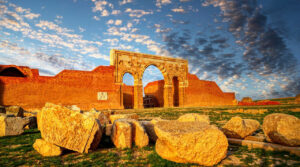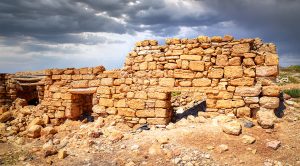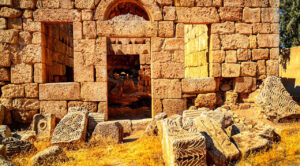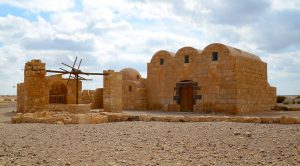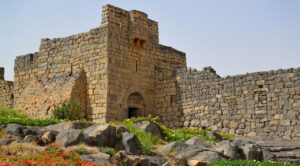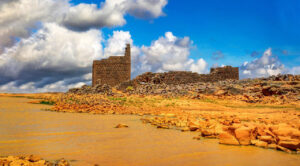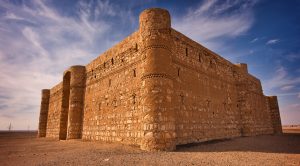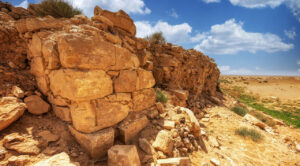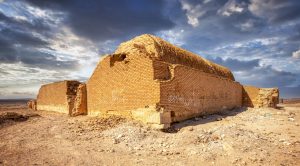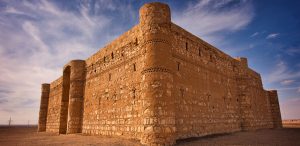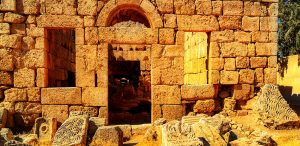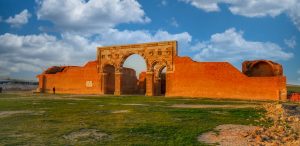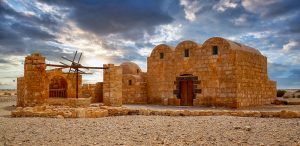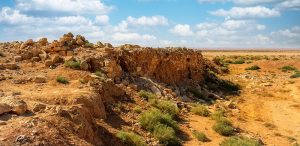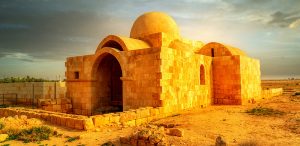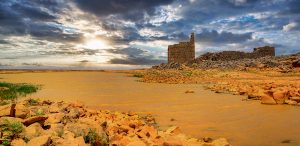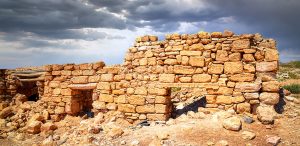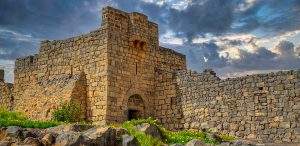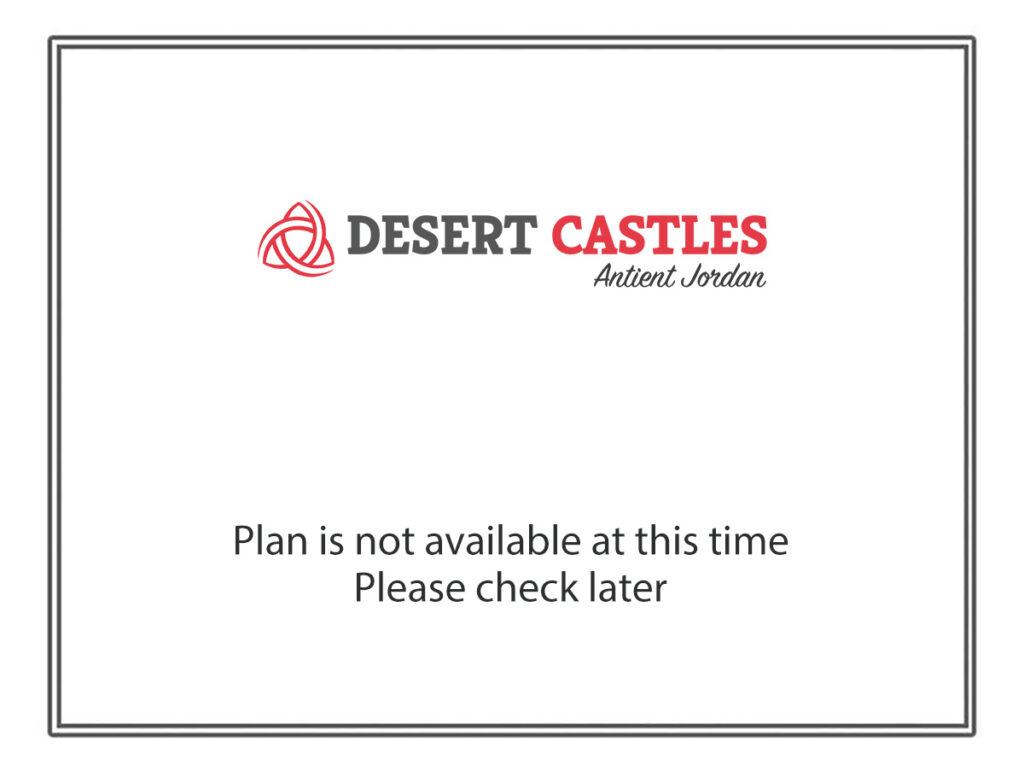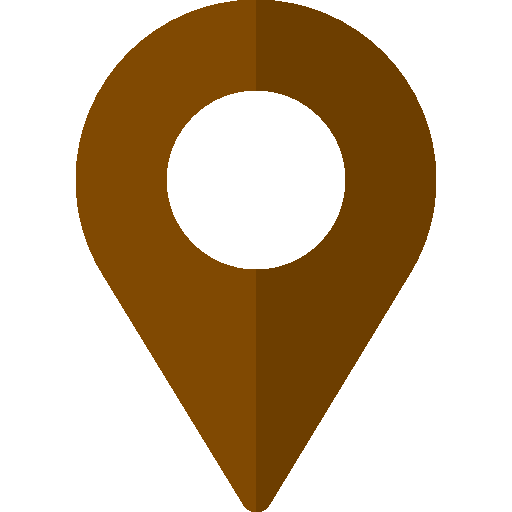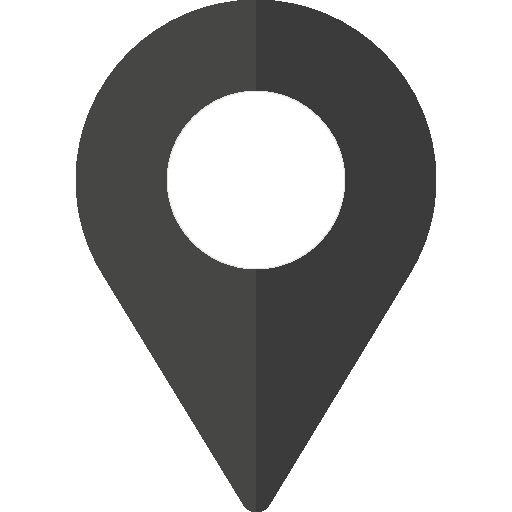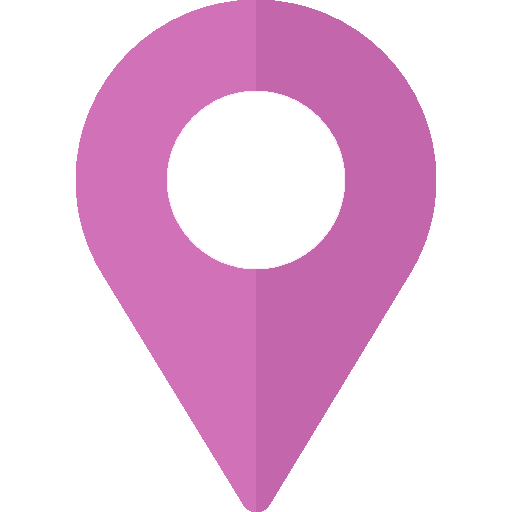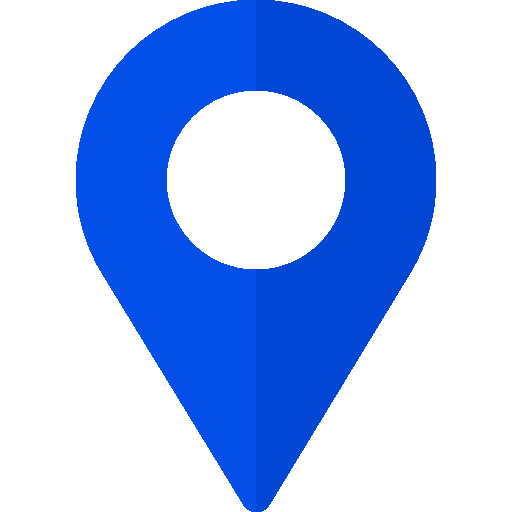Stretching east from Amman lies a sprawling desert landscape, vast and relentless, where the unforgiving terrain of sand and black basalt tells tales of ancient splendour. Scattered across this wilderness are the Desert Castles, a mesmerising collection of structures built during the Umayyad Caliphate of the early Islamic era. These remarkable constructions—palaces, hunting lodges, bathhouses and meeting halls—serve as an enduring testament to the architectural brilliance and socio-political ingenuity of the time.

Among them is Ain Es-Sil, a fascinating variation on the traditional desert castle located just 2 km from Qasr Azraq. Bordered by pine trees, this unique site was never intended as a palace. Instead, it functioned as a farming estate with an adjoining bathing complex, likely built over remnants of a Roman structure by the innovative Umayyads.
The main building of Ain Es-Sil is modest in dimensions yet rich in character. Its asymmetrical form spans roughly 17 metres on each of its four sides, constructed from distinctive circular bricks, hewn from black basalt, in varying sizes. The striking eastern wall features an entrance leading into a compact courtyard, harmoniously surrounded by seven rooms that hint at a once-busy estate life.
On the western side lies the remnants of a compact bathhouse—an essential feature of Umayyad design, echoing the grandeur of the baths at Qasr Amra, though simpler and less ornate. This bathhouse would have likely included a clever heating system inspired by Roman hypocaust technology, channelling hot air beneath the floors and within the walls to maintain its temperature. Such engineering marvels reflect the interwoven heritage of Roman and Islamic ingenuity.
Adding to the intrigue, archaeological excavations in 1984 uncovered evidence of olive presses, suggesting that olive cultivation and oil production were integral to the estate’s function. These discoveries paint a vivid picture of Ain Es-Sil’s role as a centre of agricultural productivity, enhanced by its bathing facilities—a hub of both practicality and leisure within the desert’s expansive isolation.
Though Ain Es-Sil may not mirror the grandeur of its neighbouring desert castles, its rustic charm and agricultural heritage offer a compelling glimpse into a different facet of Umayyad life. For those with an appreciation for history and innovation, the site provides a unique opportunity to step back in time and explore the harmonious blend of Roman and Islamic influences that shaped this corner of the desert.
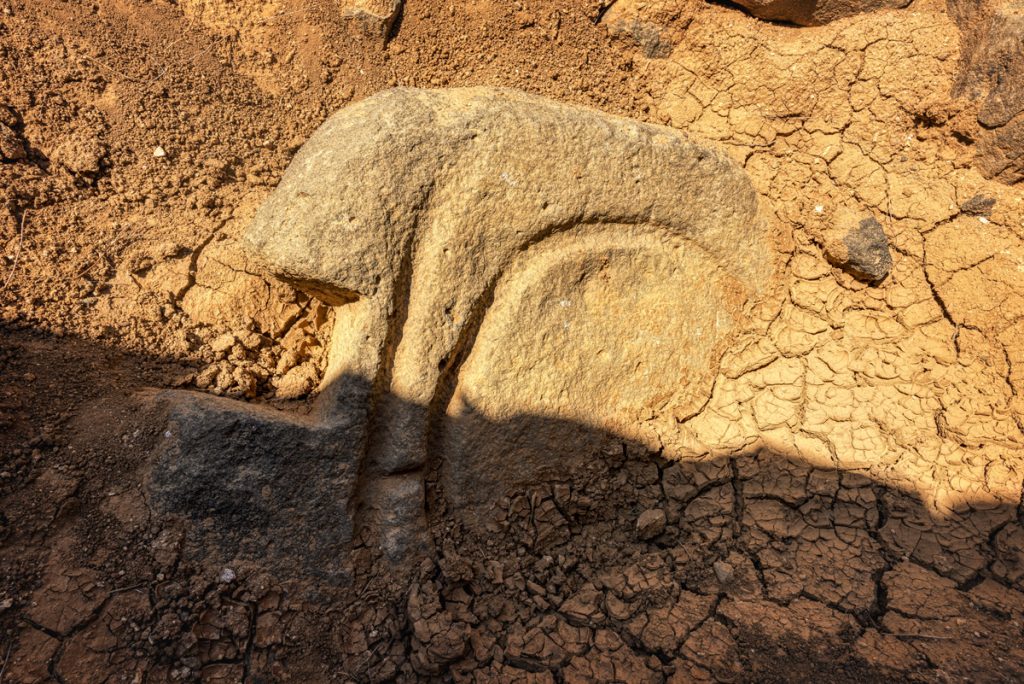
Qasr Ain Es-Sil, also known as Ain Es-Sil, is an ancient site located in the Zarqa Governorate of Jordan. It dates back to the 8th century AD during the Umayyad period, a time when the region saw significant architectural and cultural developments. This structure is one of the many historical buildings referred to as “desert castles,” a group of remarkable constructions that dot Jordan’s landscape. These castles were often used by the Umayyad rulers for various purposes, such as retreat centres, agricultural hubs, or military outposts.


